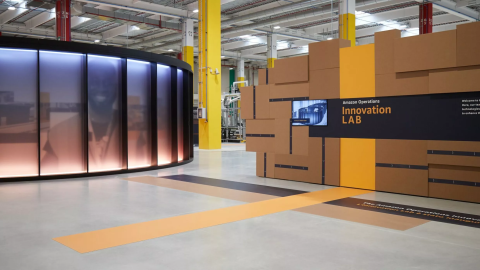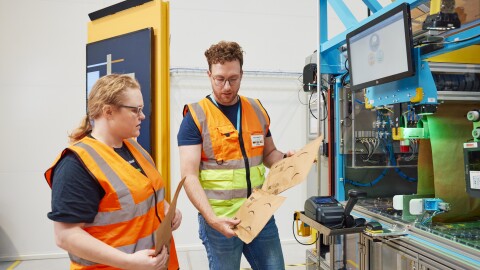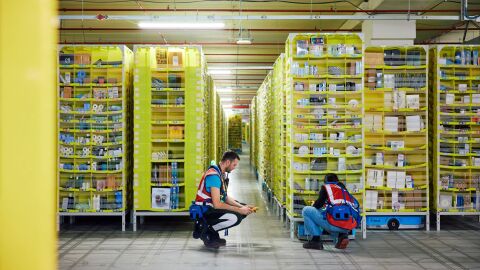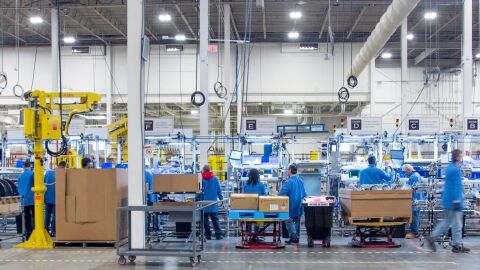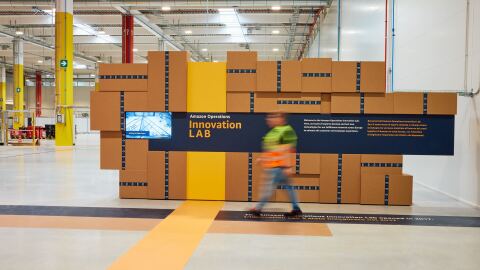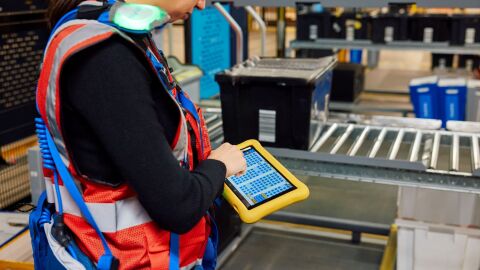FORMULA 1 is revealing its next-generation race car that will be used by teams in the 2022 season. The intent for the more aerodynamic vehicle design is to create more wheel-to-wheel racing and more action on the track. The project was run using Computational Fluid Dynamics (CFD) and thousands of compute cores on Amazon Web Services (AWS), saving F1 both time and money to deliver the new design.
Downforce is a crucial element to F1 racing as it aids traction to increase cornering speeds and reduce tire wear. Currently, F1 cars face a loss of downforce while racing close to each other, with a following car losing huge amounts of its downforce when racing close behind another. The next-generation car will run on 18-inch wheels with low-profile tires for the first time and will feature wheel wake control devices, a brand-new bodywork design with a new front wing shape, simplified suspension, new rear-end layout, and underfloor tunnels. The result is significantly reduced downforce loss when following another car closely, in turn creating more intense racing and excitement on the track.
The key goal of F1 in redesigning the car is to increase wheel-to-wheel racing between cars that is currently restricted due to the loss of downforce. This car design change helps reduce the turbulent airflow from the car in front, in turn increasing the downforce (and, therefore, the performance) of the following car and allowing them to close the gap for a chance to overtake the leading car.
The CFD project used over 1,150 AWS compute cores to run detailed simulations of over 550 million data points that model the impact of one car's aerodynamic wake on another. Using the unmatched scalability of AWS, F1 was able to reduce the average time to run simulations by 80%—from 60 hours down to 12 hours." Right in the beginning of this project, our main aim was to get cars that race closer together,” said Pat Symonds, chief technical officer for Formula 1. "Running in the cloud and running with AWS really removed all the barriers of time and computing capacity and allowed us to run what we want, when we want, and how we want. This is something I think I wouldn't have believed was possible unless I'd been able to really leverage that power of AWS and see where the future might lie."
This content is hosted by a third party (www.youtube.com).
To view the content, you need to consent to cookies by selecting Accept all in the popup banner. Or you can go to the site footer, select Cookie Preferences, and then select On under Functional Cookies, Performance Cookies and Advertising Cookies.
To redesign its cars, F1 needed to move away from its on-premises technology environment, where it used CFD along with wind tunnel testing to design and test the aerodynamic properties of cars. F1 moved its CFD simulation environment to a high performance computing (HPC) platform on AWS using Amazon Elastic Compute Cloud (Amazon EC2) instances to run complex simulations that visualize the wake turbulence of cars and the impact on following cars. F1 chose to use a combination of Amazon EC2 C5n instances and the new AWS Graviton2-based C6g instances to gain maximum flexibility in terms of pricing and performance.
Along with reducing its simulation time from days to hours, F1 lowered the cost of running these workloads by 30% by using the AWS Graviton2-powered instances.
"The recent release of AWS Graviton2 has allowed us to really optimize other jobs and has achieved about a 30% cost savings for us at the moment. And I actually see that going further. I'm sure we can move towards 40% cost savings compared to our old methods of doing things," Symonds said. "By working with AWS, we really have access to a huge environment, and I'm not just talking about physical environment of compute power, but some really, really great people to work with. Some people who push us just as much as we push them."





